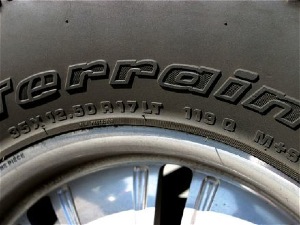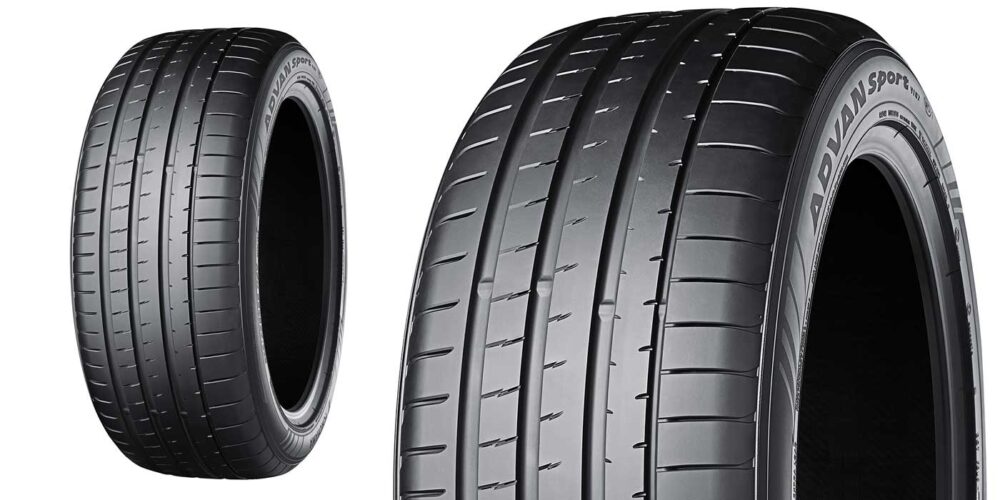"TMI!"
Together, the initials once conjured up images of the 1979 nuclear reactor core meltdown on Three Mile Island near Harrisburg, Pa. Today, the letters are commonly used in casual and online conversations to exclaim "too much information!" when someone shares personal and sometimes unpleasant facts.
The tire industry may want to adopt TMI as a battle cry against the ever-increasing amount of information being crammed onto the ever-shrinking space on a tire sidewall. The good news is that common sense may be winning out over the latest legislation designed to provide consumers with information about a tire’s contribution to vehicle fuel economy.
U.S. regulators have long felt that if there is available space on a tire sidewall, it should be filled with some kind of consumer information. Over the decades, a tire’s brand and model name have been joined on sidewalls by a myriad of details. Basic dimensions and profile ratios, construction types and production dates, reinforcement materials, maximum inflations and loads usually are included.
The Uniform Tire Quality Grade provides another reason to mold more information into sidewalls. Its treadwear, traction and temperature resistance ratings give comparison shoppers confusing – and unrelatable – data at best.
Tire designers are lucky to still have room for decorative ornamentation on sidewalls, let alone a brand name.
Regulatory activity by Congress during the past 40-plus years has focused on providing consumers with enough information to determine the safety of and compare the quality of tires during the purchase process. Whether customers understand the information – or can even find it on jam-packed sidewalls – fuels the debate about its usefulness.
Yet, before the question of UTQG’s worthiness and effectiveness is completely addressed, a new regulation is in the works that will add another comparison element to safety and quality for consumers to consider during a tire purchase.
Environmental impact in the form of a fuel efficiency rating is the next grade on the horizon for a tire to receive. The Energy Independence and Security Act of 2007 addresses the U.S. policy toward energy efficient products, renewable fuels and so-called greenhouse gases. Section 111 of the legislation is the Tire Fuel Efficiency Consumer Information Program.
New Regulation Details
Passed four years ago, the program has yet to be enacted as regulators continue to tweak the tire fuel efficiency test and consumer information requirements. The test procedures currently are intended to address three aspects of tire performance: rolling resistance, wet traction and tread life.
Regulators profess that informed choices about fuel efficient tires are a matter of public concern and the country’s security, since passenger and light truck vehicles consume 135 billion gallons of fuel annually.
There are at least two major problems created by adding more information on a tire, according to Dan Zielinski, Rubber Manufacturers Association senior vice president of public affairs.
“Tire profiles continue to change with aspect ratios becoming lower, so a sidewall’s area is shrinking,” says Zielinski. “There isn’t enough room to put more information on it. In addition, consumers already ignore much of the information on a tire, including the UTQG ratings. They either don’t understand the information or don’t want to take the time to understand it.”
In more than 300 pages of written comments submitted to the National Highway Traffic Safety Administra-tion in 2009, the RMA pushed to provide the fuel efficiency rating at the point of sale, rather than having it molded into tires or printed on a paper label stuck to the tire.
Zielinski says the RMA sought four key elements in the tire fuel efficiency program, all designed to help consumers:
1) Provide information at the point of sale.
2) Provide meaningful information that is easy to understand.
3) Provide a wide range of replacement tire fuel efficiency rating choices appropriate for each consumer’s existing vehicle.
4) Provide information in a way that minimizes its overall cost to consumers.
When the bill was passed, the tire section included the stipulation that it “shall not require permanent labeling of any kind on a tire for the purpose of tire fuel efficiency.”
The RMA believes that tire retailers can provide rating information to consumers in their tire showrooms or waiting areas. “NHTSA can allow tire retailers to choose one or more methods to communicate the ratings that best suit their business model and customer needs,” says Zielinski. “Options could include tire manufacturer brochures and product catalogs or in-store access to tire manufacturer, tire retailer and even NHTSA websites containing rating information.”
There’s still time before the fuel efficiency rating mandate will kick in. NHTSA is still wrestling with how to conduct additional product testing and resolve issues raised by the public during a comment period.
The RMA is challenging the proposed 0- to 100-point tire fuel efficiency scale. “NHTSA’s approach would not provide consumers with useful information, since a typical consumer with a specific vehicle would have only a 20- to 30-point spread on the 100-point scale to compare appropriate replacement tires,” Zielinski says.
The adoption of the fuel efficiency rating may open the door for discussions about removing existing information from tire sidewalls, especially since the new ratings don’t stop at rolling resistance. Included with the fuel efficiency rating will be measurements intended to indicate a tire’s ability to stop on wet pavement, along with tread life or durability.
Sound familiar? It should, because similar information makes up the UTQG rating – which will remain in place.
“We need to purge redundant tire information from tire sidewalls and the fuel efficiency rating opens that door,” Zielinski explains. “The UTQG ratings for traction and treadwear can be eliminated, since they convey similar information found in the tire fuel efficiency plan’s ratings for durability and wet traction. Then we can address similarities between the UTQG temperature rating and a tire’s speed rating.”
Whether or not TMI is replaced by TRI – The Right Information – and space becomes available on sidewalls in the near or distant future, tire dealers, salespeople and technicians need to welcome and embrace opportunities to explain the abundant information available to customers.
Performance information comparisons help drivers understand how a tire choice can affect their vehicles’ fuel efficiency, their own safety and tire life.













